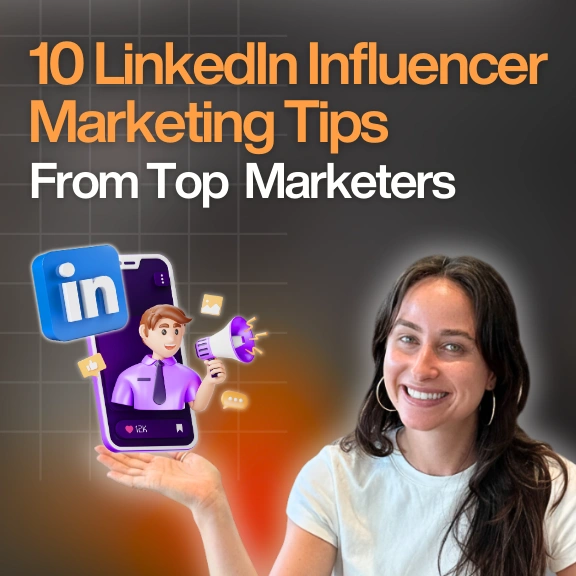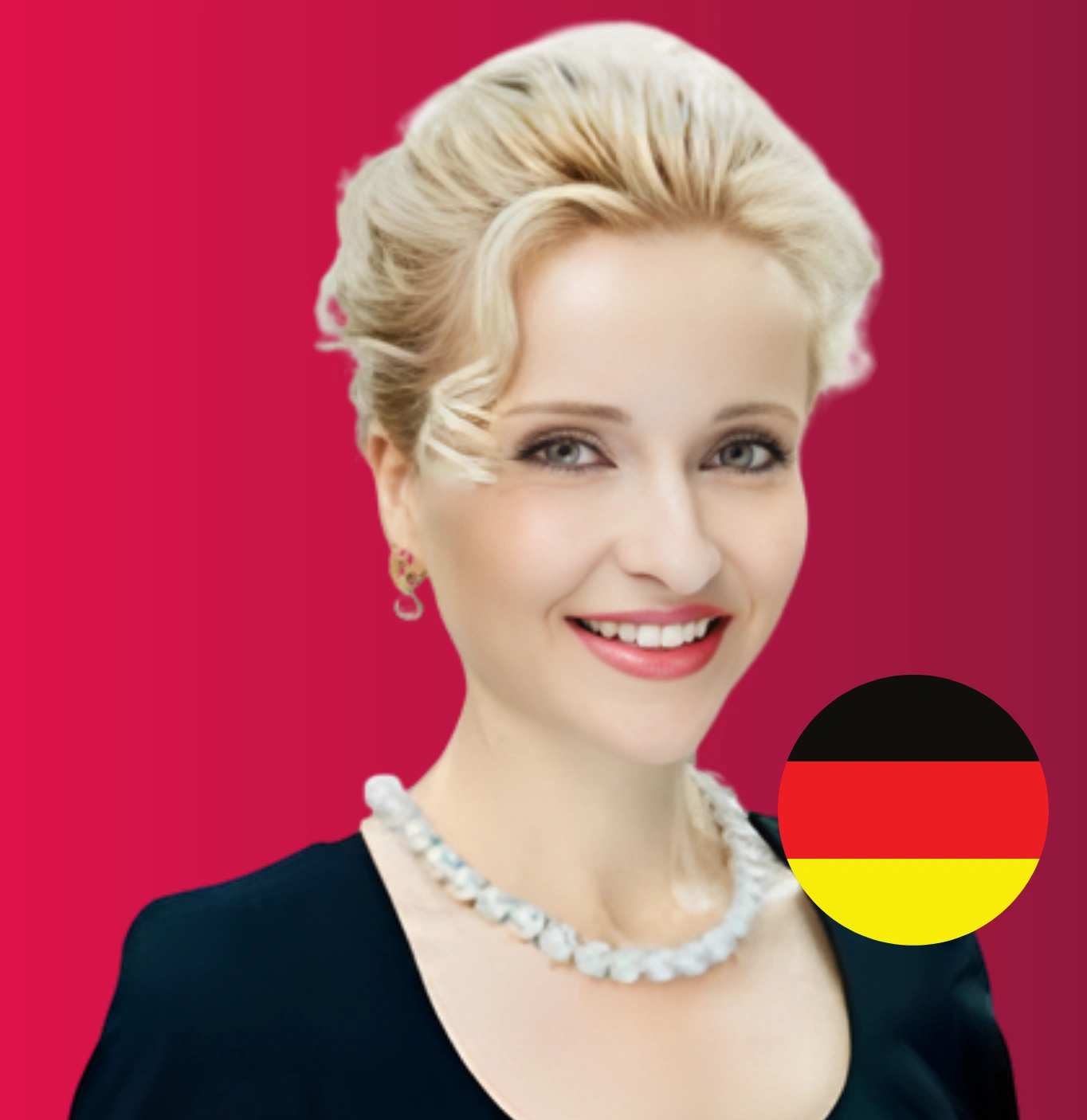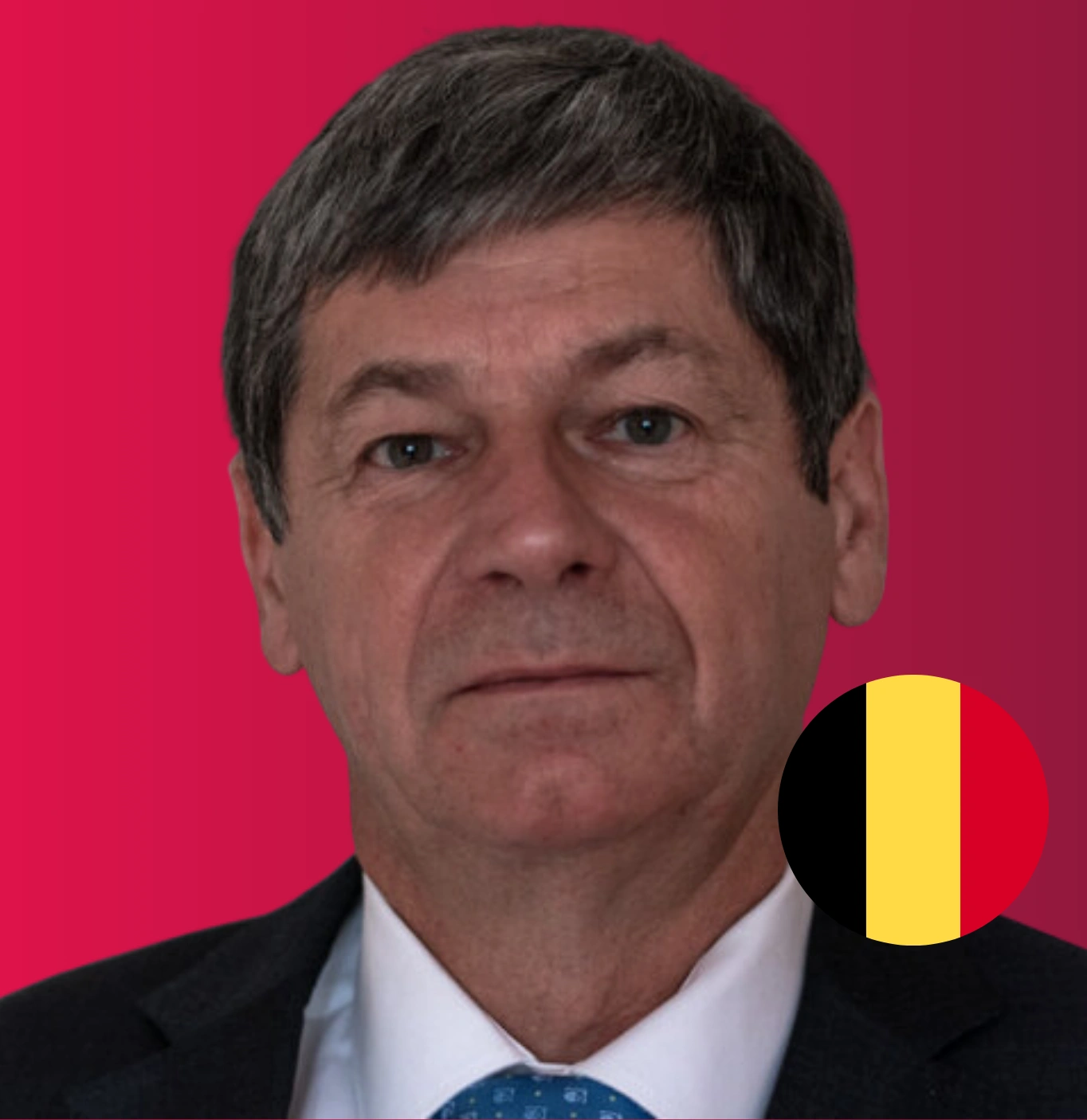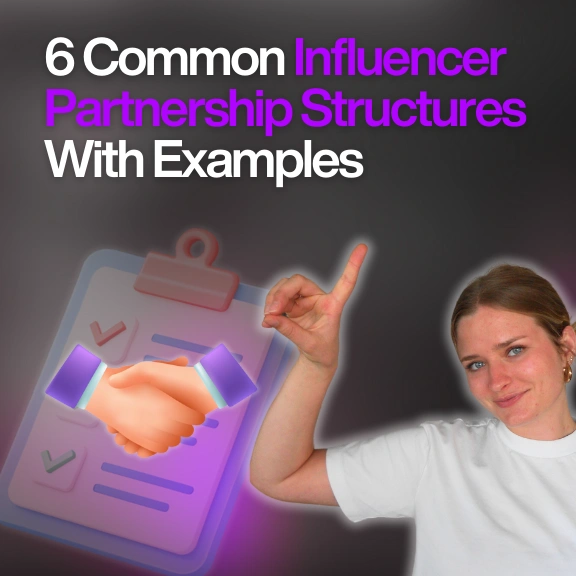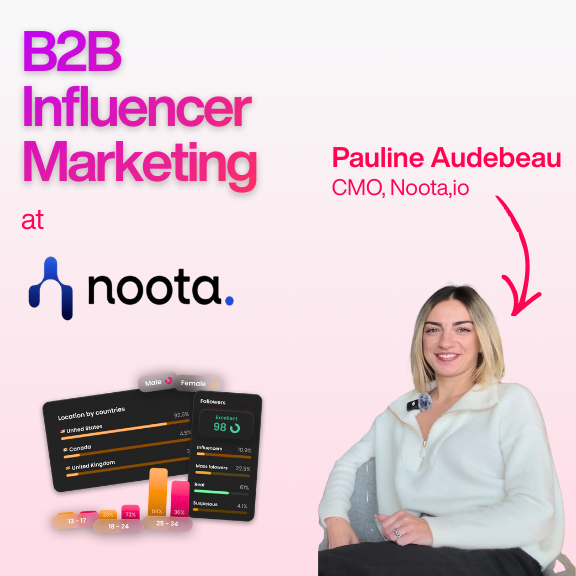Blog & Articles
Your ultimate ressource for the creator economy
Methodology & Rankings
About Favikon, rankings, tools & much more.
Insights
The recipe behind Favikon's viral & coveted rankings.
Free tools to power your influencer marketing workflows.
See Favikon users' success stories.
Get access to all Favikon rankings.
Become a Partner
Become an Affiliate
About the team behind Favikon
The place to talk creator economy, together


Featured Rankings

Here is the Top 50 Rising Video Creators on LinkedIn. Video is quickly becoming the platform’s most powerful format, with creators gaining more reach and engagement than ever. As Gen Z grows its presence and tools like BrandLink and Thought Leader Ads support content creation, LinkedIn is doubling down on video. This ranking, made in partnership with OpusClip, celebrates the creators leading this shift and aims to inspire anyone ready to start sharing through video.

Here is the Top 50 Rising Video Creators on LinkedIn. Video is quickly becoming the platform’s most powerful format, with creators gaining more reach and engagement than ever. As Gen Z grows its presence and tools like BrandLink and Thought Leader Ads support content creation, LinkedIn is doubling down on video. This ranking, made in partnership with OpusClip, celebrates the creators leading this shift and aims to inspire anyone ready to start sharing through video.


Megan Mahoney is an influencer marketer who uses data and real-world case studies to uncover what actually drives results in influencer campaigns. With a background in content marketing and over a decade of experience helping brands grow through strategy and storytelling, she brings a thoughtful perspective to creator partnerships and is deeply engaged in the evolving creator economy.
Check Brand Deals6 Common Influencer Partnership Structures With Examples
Paying a flat fee for a post is one way to compensate influencers, but it isn't the only partnership structure.
In this post, we'll discuss various partnership structures that can help you achieve one of the following goals:
- Incentivize influencers to drive sales.
- Allow brands to collaborate with macro influencers at a discount.
- Build long-term relationships with key influencers.
#1: Product Seeding and Free Product With Guaranteed Post
Product seeding occurs when a brand sends an influencer a free product in the hope that the influencer will post about it.
You can also receive free products in exchange for a guaranteed post. We'll discuss these two partnerships interchangeably, although they are distinct.
Product seeding is when the influencer hasn't agreed to accept the free product. Instead, the brand sends the free product in hopes that the influencer posts about it. On the other hand, free product with a guaranteed post is when the influencer agrees to accept a product for free and post about it.
As influencer marketing has become increasingly common, both of these strategies are less effective, as many influencers routinely receive free products and prefer monetary compensation.
In fact, here are some statistics regarding product seeding/free product for a post from influencer marketer, Jennifer Quigley-Jones:
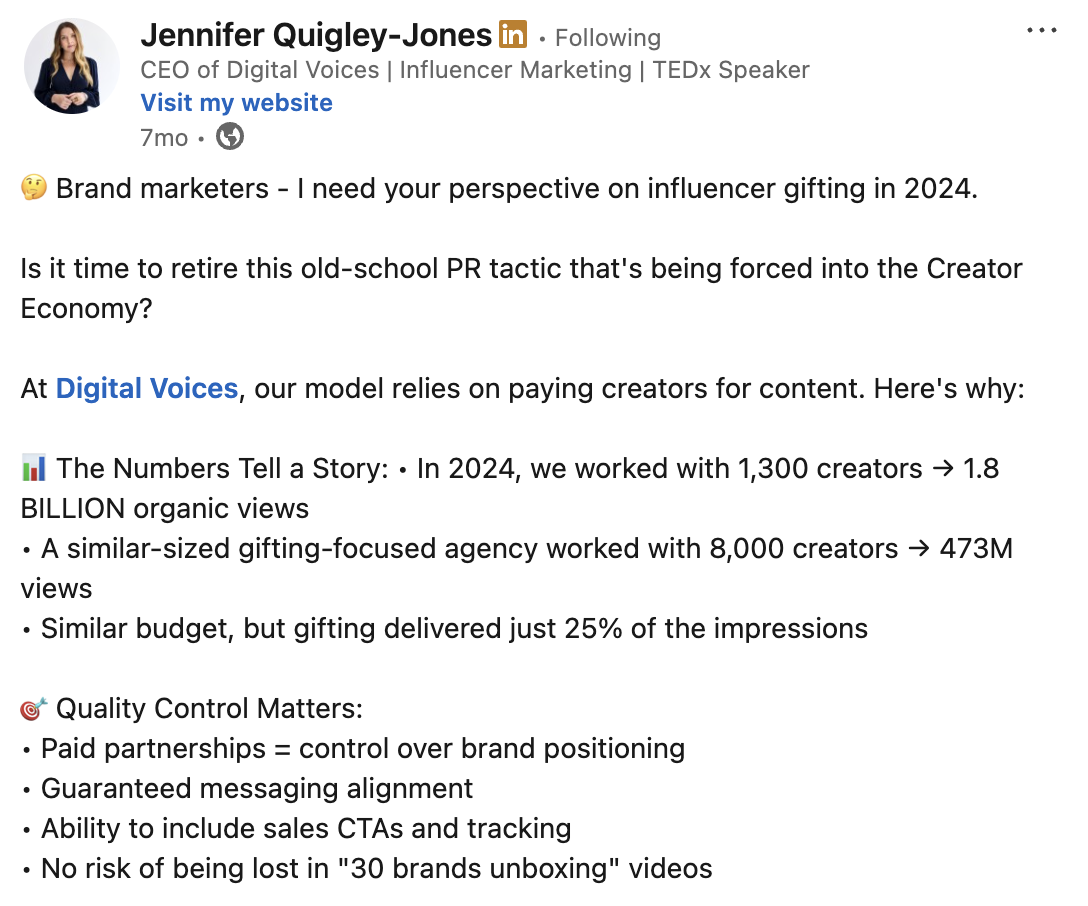
Jennifer also points out that product seeding doesn't give you any control over the influencer's message and can therefore muddle your brand's image.
Influencer marketer Maddy King also notes that the downside of product seeding is that it can tarnish your brand's image in the eyes of potentially excellent promotional partners.
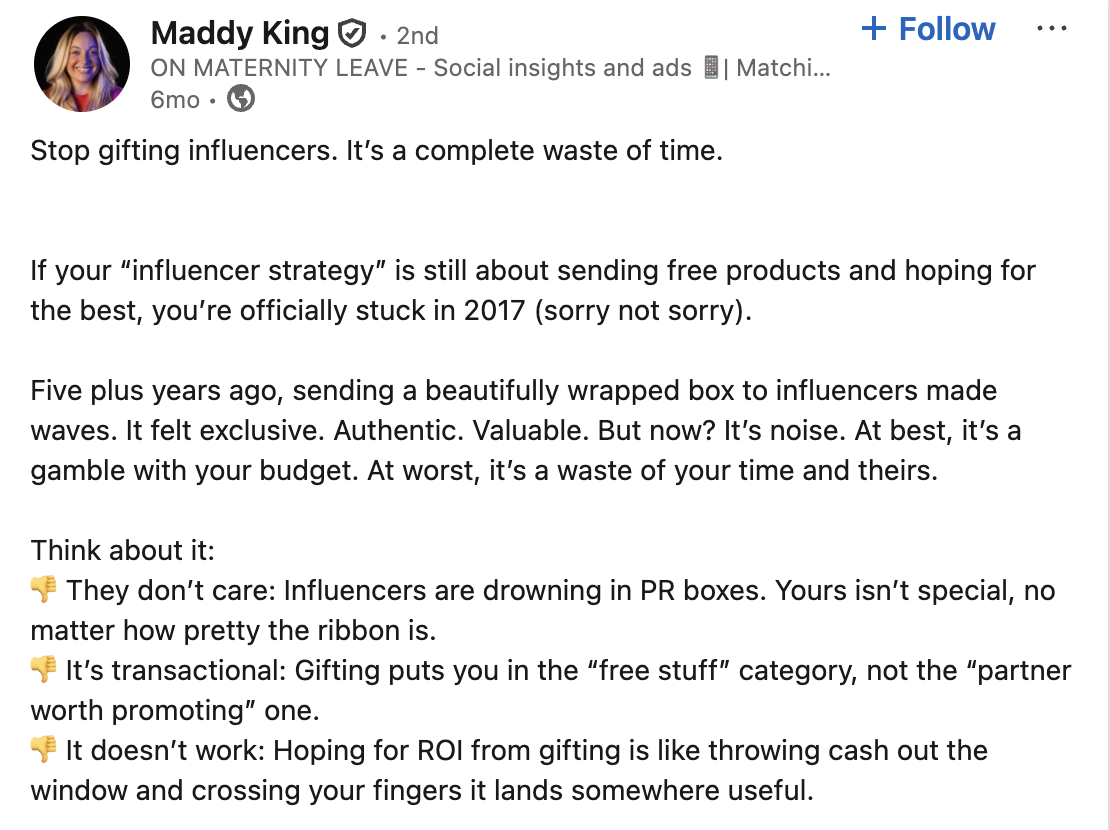
However, product seeding or offering a free product for a guaranteed post can be effective when done strategically. That said, realize that (most) effective product seeding/free product for a post isn't cheap.
Here are four instances where these strategies can work:
- Partnership conversation starter: Sending free products to influencers (product seeding) can be a great way to capture their attention and open the door to either affiliate partnerships or longer-term paid partnership conversations.
- Raffle Entry: You use the influencer post as an opportunity for influencers to enter a raffle for a grand prize (that the influencer values).
- Expensive/valuable product: If your product is over $500 (e.g., cold plunge, car, etc.), some influencers (primarily micro) who match your ICP will be happy to accept a product of substantial value for free.
- Community Giveaway: Offer a free giveaway to the influencer's community instead of sending the product directly to the influencer. This is also a great way to make their audience match your ICP.
Let's walk through examples of brands that have executed each of these with success.
Partnership Conversation Starter
Wix sent free product to a variety of influencers, hoping to receive a post. The target was 50% engagement, and the campaign ultimately received 35% engagement.
However, a primary benefit of the campaign was that previously unresponsive influencers engaged with the brand.
Therefore, product seeding can be an effective way to initiate longer-term collaborations or affiliate partnerships.
Raffle Entry
Ralph Lauren executed an outstanding influencer gifting campaign using the raffle angle.
First, instead of sending free products without warning, the team at Ralph Lauren emailed about 100-200 influencers and asked if they would be interested in participating in their free campaign.
Even if they accepted the free product, the influencers weren’t required to post.
However, to incentivize influencers to post, those who published a post about the product were entered into a raffle to enjoy a weekend with Aaron Judge of the New York Yankees.
However, realize that the grand prize was a genuinely unique experience that money can’t buy.
Therefore, if you choose the raffle approach, ensure that the grand prize is something truly unforgettable that's worth many times the influencer's value in promoting your product.
Ralph Lauren also has a strong brand, and many smaller influencers would likely be more than happy to post that they're a partner simply for the brand affiliation.
Expensive/Valuable Product
The Plunge was one of the first cold plunge providers, and they grew primarily through influencer partnerships with people like Andrew Huberman.
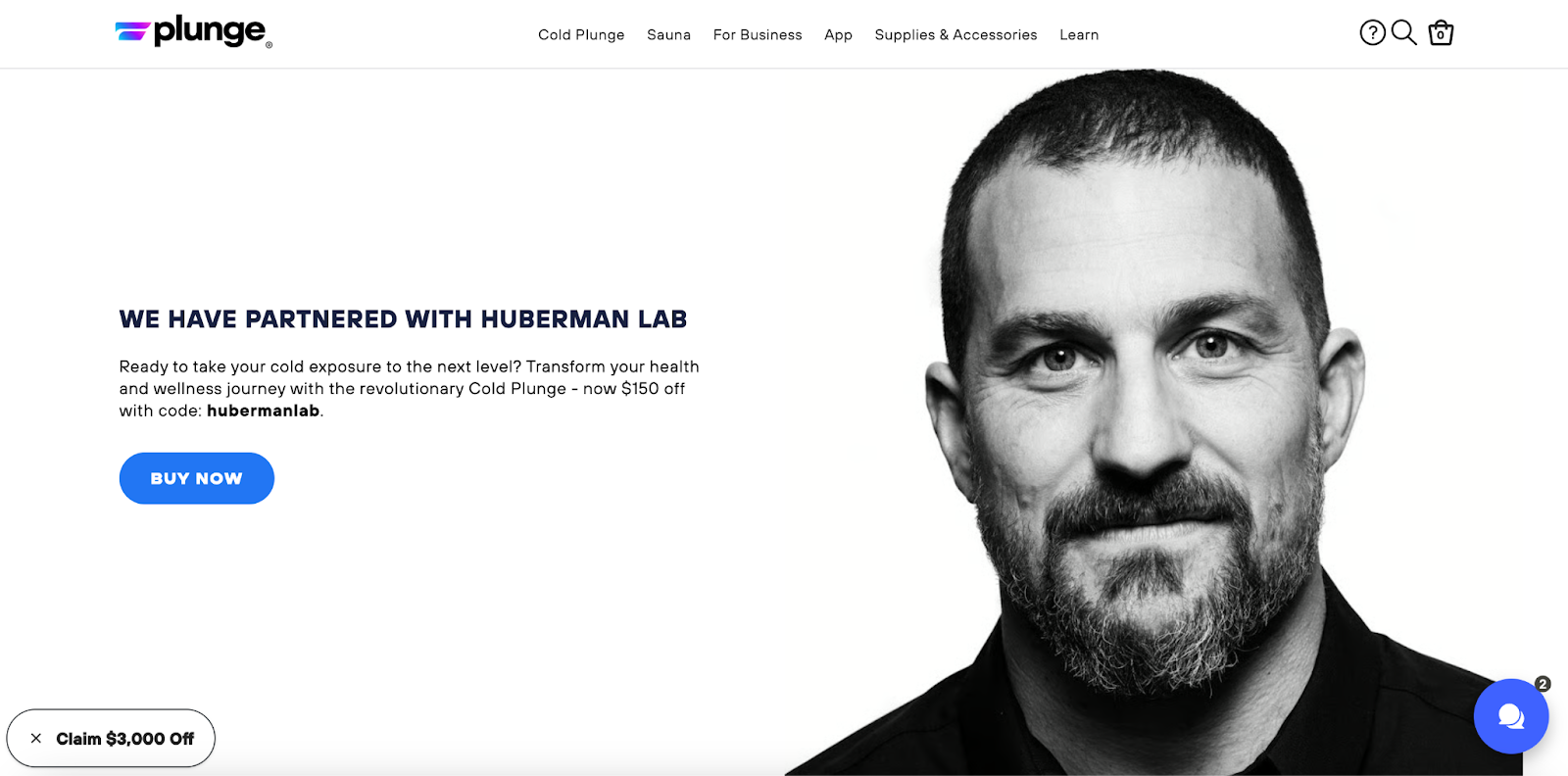
However, keep in mind that a single cold plunge is often worth $5,000 to $9,000.
If you decide to offer a free product in exchange for a guaranteed post, be sure to reach out to the influencer in advance to ensure it's something they genuinely want.
Otherwise, the strategy can quickly become very expensive, as you'll lose a significant amount of revenue due to inventory losses.
Community Giveaway
Influencer marketer (and influencer!) Brianne Fleming mentioned that she prefers to give away the product to her community.
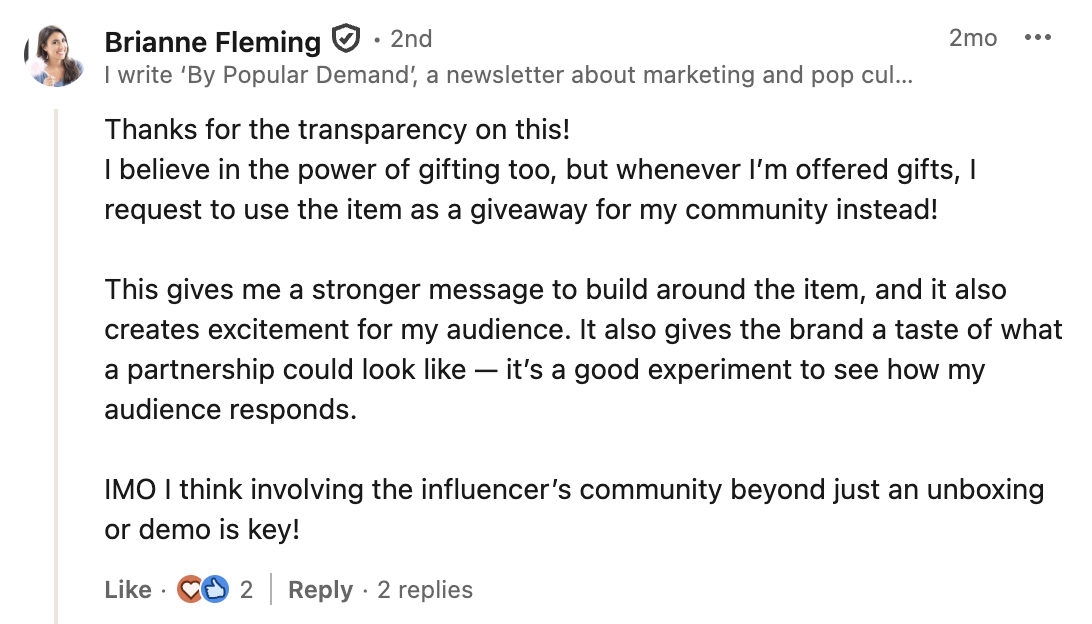
#2: Paying For Content Rights and Whitelisting
Audience trust is an influencer's livelihood, and they realize that if they sell to their audience too often, or promote products/services that their audience doesn't want, they'll lose that trust.
Paying influencers to simply record content to use in ads is a great solution to this dilemma, as influencers don't have to post anything to their audience, but the brand borrows the influencer's credibility to increase the efficacy of their ads.
This is a great way for smaller brands to work with macro creators at a discounted price.
It's also important to note that you'll need to state in any influencer contract whether or not you'll have the rights to use that content to run ads.
The next level up from simply providing content rights for the brand to run from their own ad accounts is whitelisting, where the influencer also allows the brand to leverage their accounts to run ads.
There are two main benefits of whitelisting (running ads directly from the influencer's page) over simply using the influencer's content to run ads from the brand account:
- Lookalike audiences: Brands can leverage the custom audiences based on the influencer's followers or engagers. For example, you can target people who look like the influencer's fans, who you've already determined match your ICP. If you're running ads from your brand's account, you're limited to your own audience and interest targeting.
- Increased engagement and credibility: Audiences are more likely to pause and look at the content if it's coming from a trusted account.
Below is an example of whitelisting. Upwork partnered with restaurant owner and influencer Alexandra Lourdes and ran an ad for Upwork from her account using content that Lourdes created:
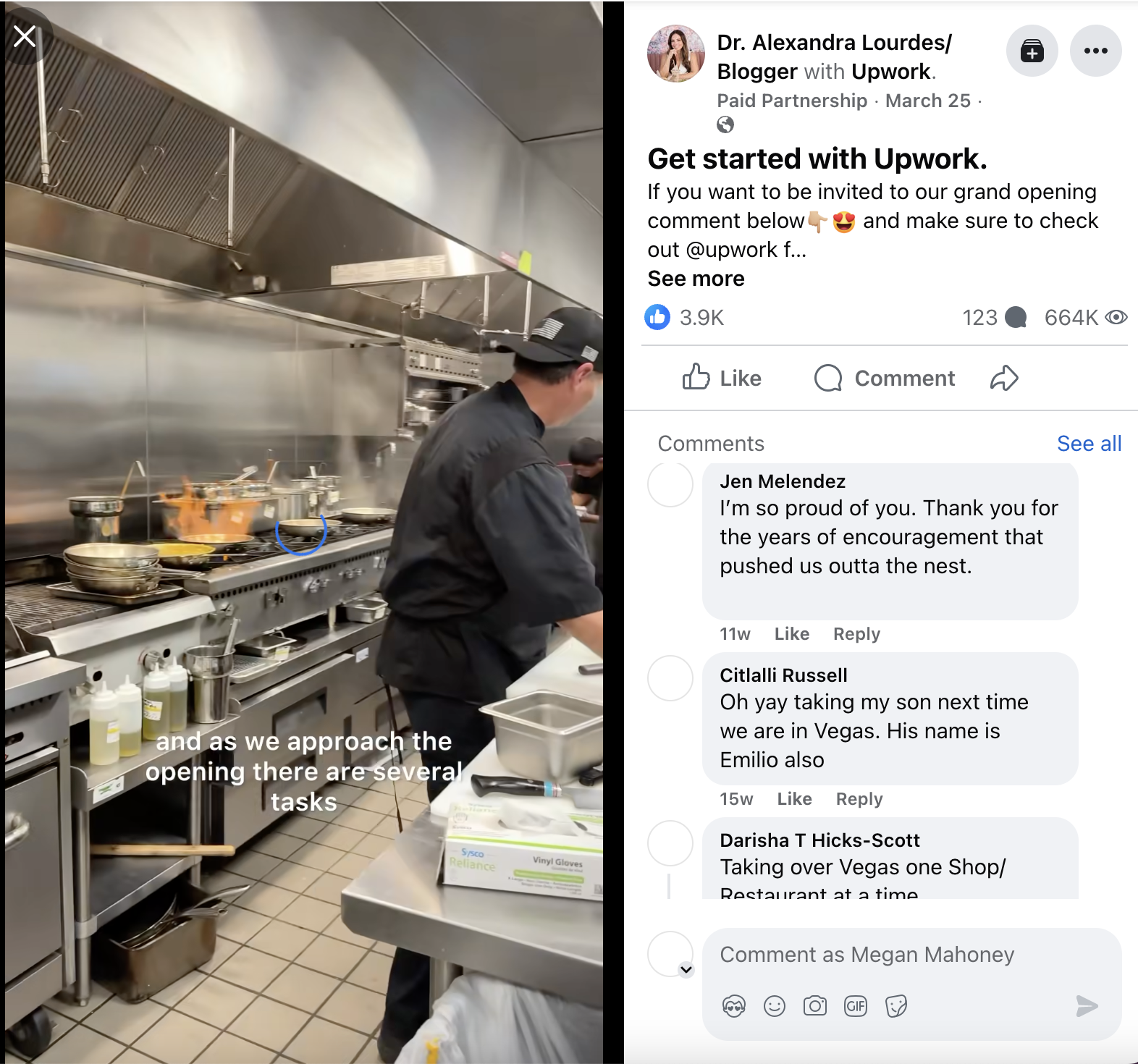
Many brands have claimed that influencer whitelisting is far more effective than simply running ads from a brand account.
Here's one of those examples:
#3: Flat Fee Posting
Most influencer partnerships are flat fee partnerships – the brand pays the influencer to post a specific type of content on a particular platform within a specific timeline.
However, there are a few nuances to flat fee posting that can impact how much a brand pays an influencer and the value of the collaboration to a brand:
- One-off vs. long-term partnerships:
- One vs. multiple platforms:
- Content life and format: YouTube videos require more effort than Instagram content, but they are also evergreen and therefore more valuable to your brand.
- Creative control/campaign idea: The type of content you pitch also has a significant impact on your overall brand
Let's discuss each of these variables.
One Off vs. Long Term Partnerships
Most influencers are willing to negotiate if you plan to engage in long-term partnerships with them.
You can always start with a single campaign before jumping into a long-term partnership, but make your intentions known from the beginning to use as leverage during negotiation.
One vs. Multiple Platforms
Influencers often have multiple packages, and the more platforms you partner with them to publish on, the lower your rate will be.
However, not all platforms are equally valuable to your brand, so choose platforms that you understand and that your audience uses.
Content Life and Format
Expect video content, especially long-form YouTube videos, to cost more than an Instagram post.
However, an evergreen YouTube video is also worth more to your brand, as it will remain discoverable years from now.
Additionally, if the content your influencer publishes targets a relevant keyword, it's more valuable to your brand.
For example, Wix and Squarespace sponsored creators to publish videos targeting the keyword "how to build a website." Ranking first for this keyword is valuable because it not only helps Squarespace and Wix reach the creator's audience, but they also reach a new audience of people searching for their pain points.
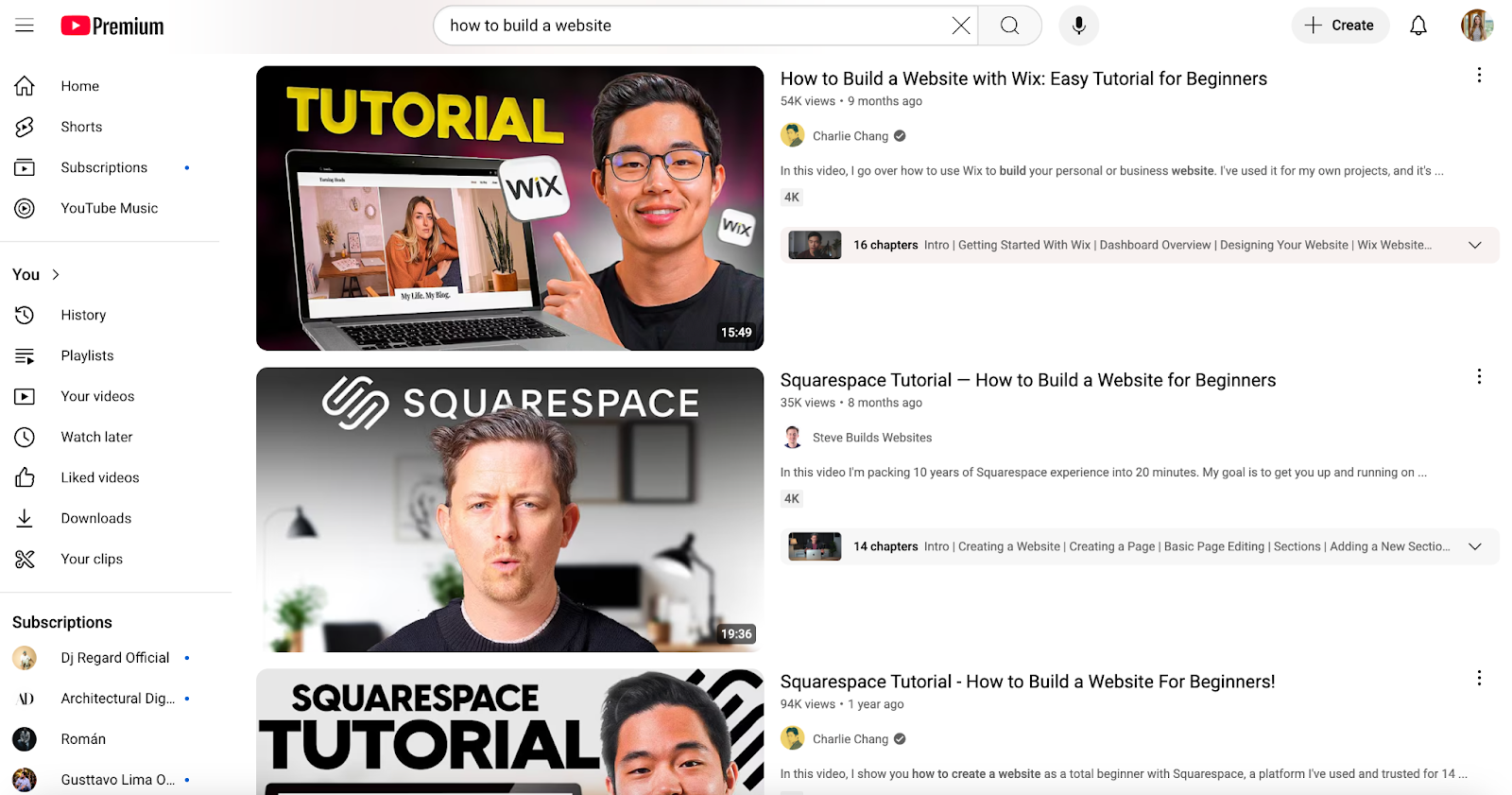
Similarly, if you have a dedicated video reviewing your product and explaining how to use it, that’s often more valuable than a simple product integration.
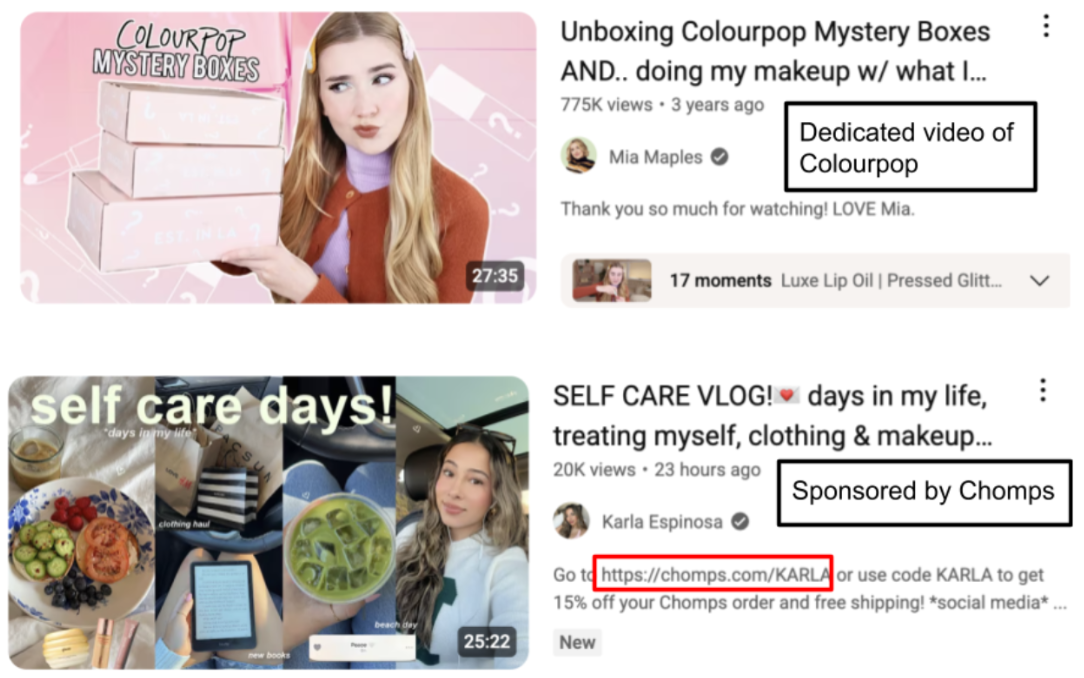
Creative Control/Campaign Idea
Your creative campaign idea or creative freedom permissions also have a significant impact on whether or not creators will accept your offer.
For example, this influencer who partnered with Hootsuite turned down 36 other offers because the previous offers didn’t offer anything unique for the audience:
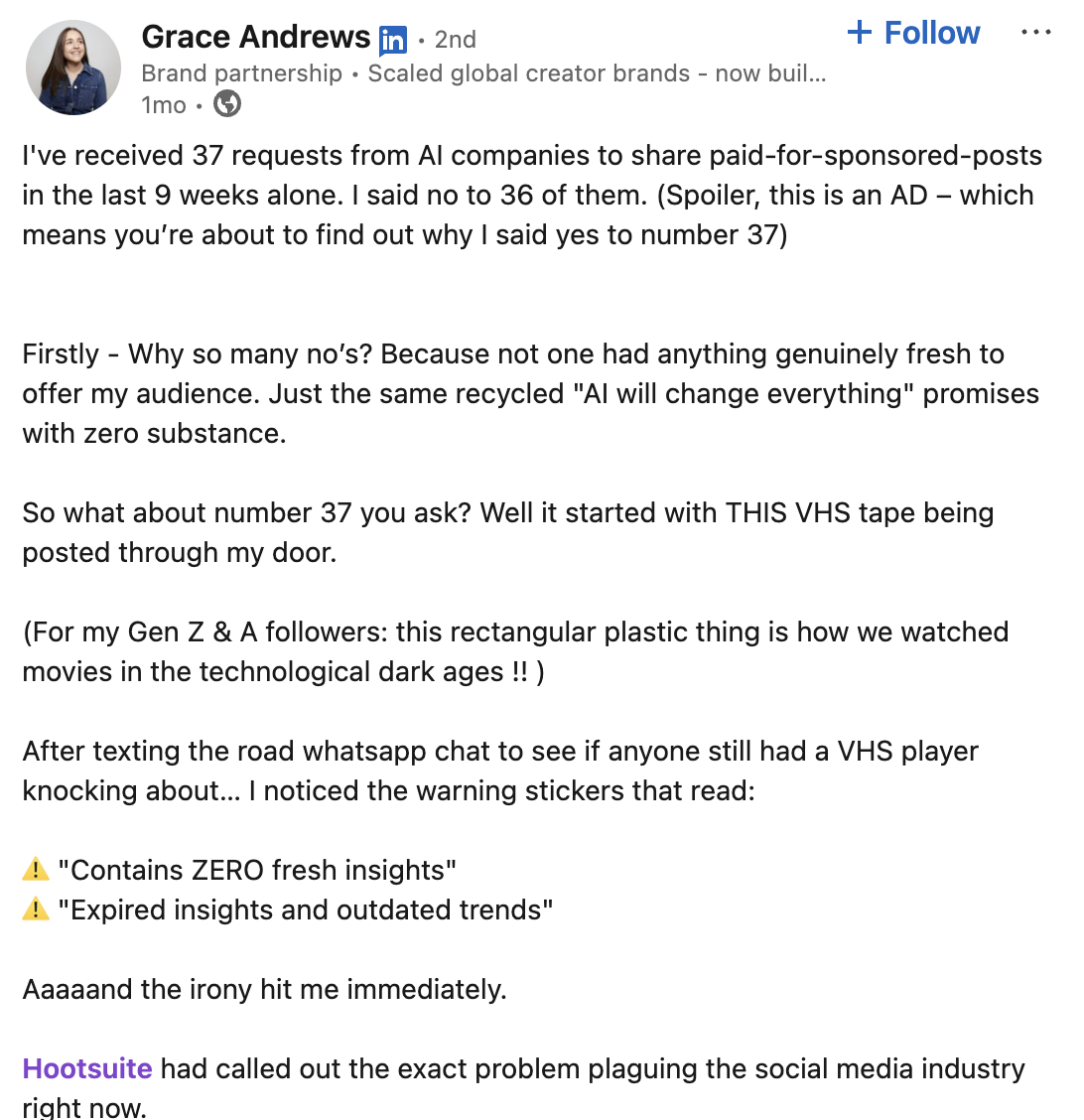
Finally, don’t be afraid to negotiate. This influencer negotiated down to nearly 1/10th of the initial quote an influencer gave:
When asked how this influencer marketer negotiated the rate, they responded that they simply walked away from the offer saying, “thanks but not thanks.”
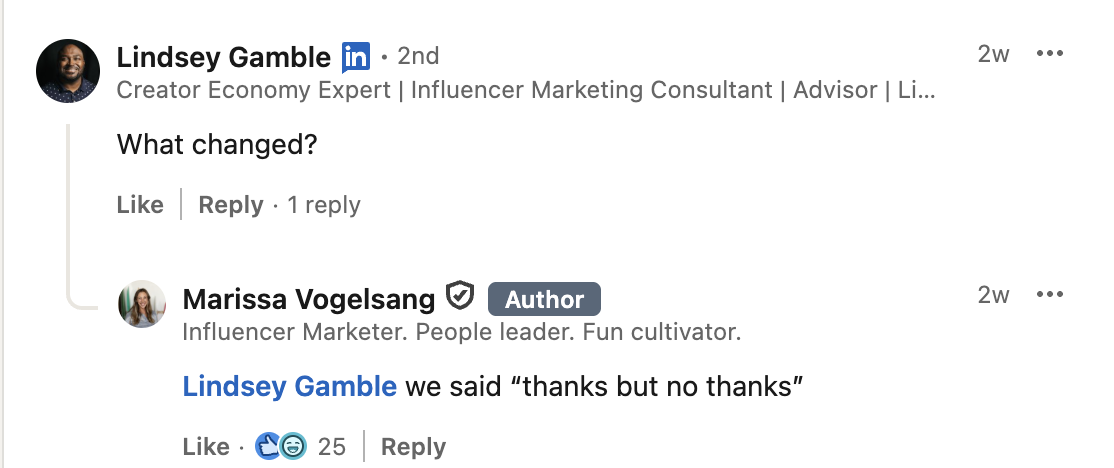
Therefore, be prepared to pay an influencer what they’re worth to your brand, but don’t be afraid to negotiate either.
If you want some additional tips on negotiating flat fee agreements, here are a few tips from influencer marketer Marion Balinoff:

#4: Performance-Based or Hybrid Deals
Many brands prefer to pay influencers based on performance, meaning creators are compensated based on the number of impressions, activations, or leads they generate.
However, most influencers aren't open to purely performance-based deals, as there's a lot of risk involved for them.
Instead, hybrid deals are more common. For example, brands may pay an influencer a flat rate with bonus incentives.
Here's how influencer marketer, Georgia Branch, approaches hybrid deals:
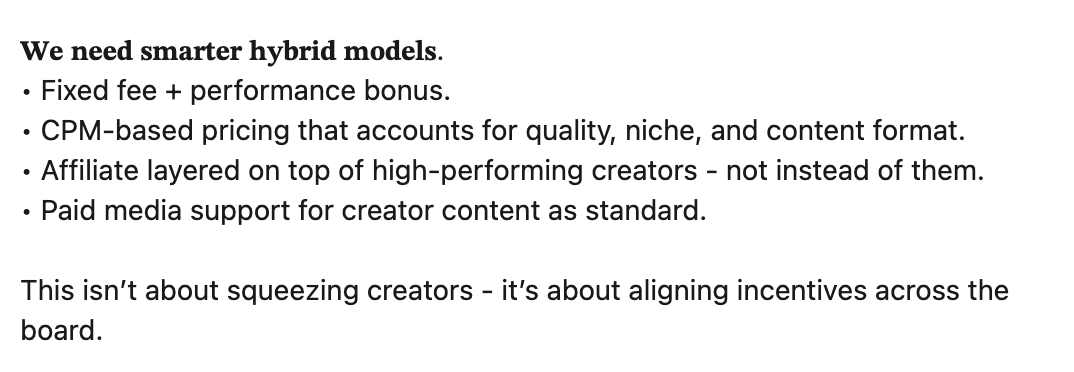
Similarly, talent manager Benjamin Woollams allows brands to buy the rights to influencer content on a performance basis:
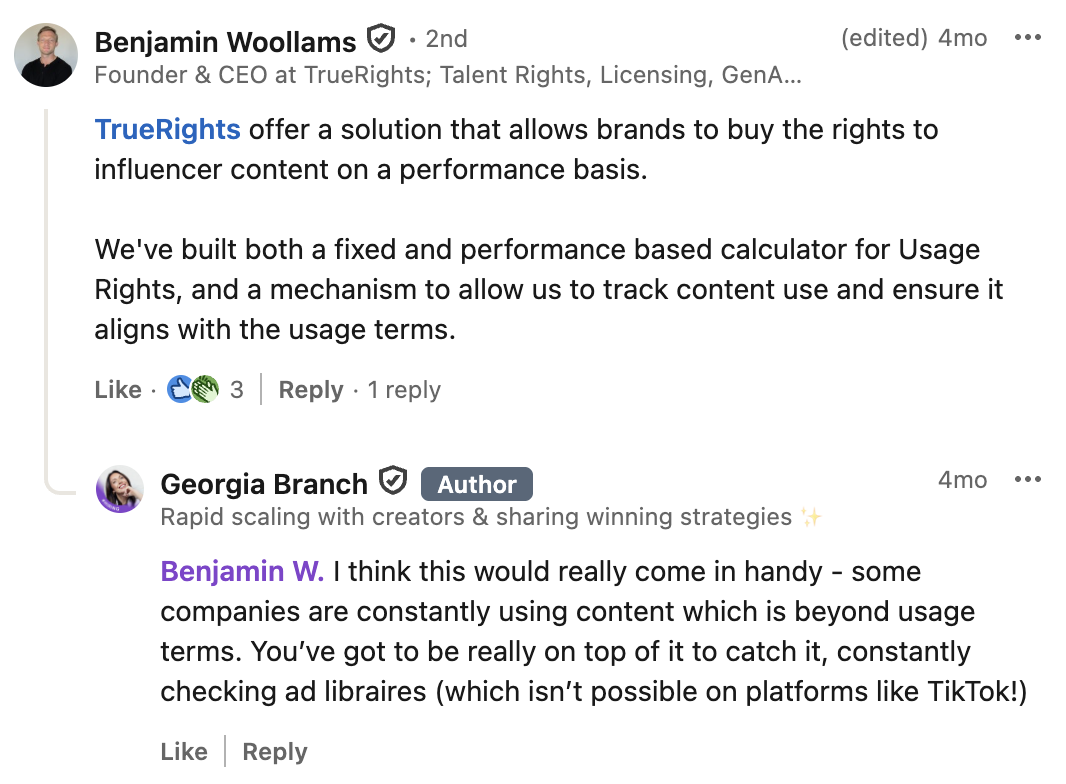
#5: Company Equity
Long-term partnerships with the right influencer can significantly increase your brand's credibility and reach, though continuously paying a noteworthy influencer to promote your brand can become expensive and unrealistic for many brands.
This is why equity agreements can be a better alternative for both influencers and brands.
There are several ways to structure an equity deal with an influencer, including a combination of equity and cash, or solely equity.
For example, Magic Spoon founder Gabi Lewis pitched a handful of "relatively small" health and wellness influencers to invest in his business. They wrote small checks ($5,000 to $10,000) and then helped him build anticipation for the launch and promote it beyond that launch.
By investing their capital in the business, these influencers had a vested interest in the company's success and were therefore more willing to promote the brand.
Additionally, long-term partnerships with these influencers allowed Magic Spoon to gather valuable product feedback.
Another option is to do a long-term equity deal with a single influencer.
Wallet company, Ridge, is a perfect example of this. They did a deal with MKBHD where he was compensated in cash and received equity in the business.
This was the initial tweet that started the search for MKBHD:
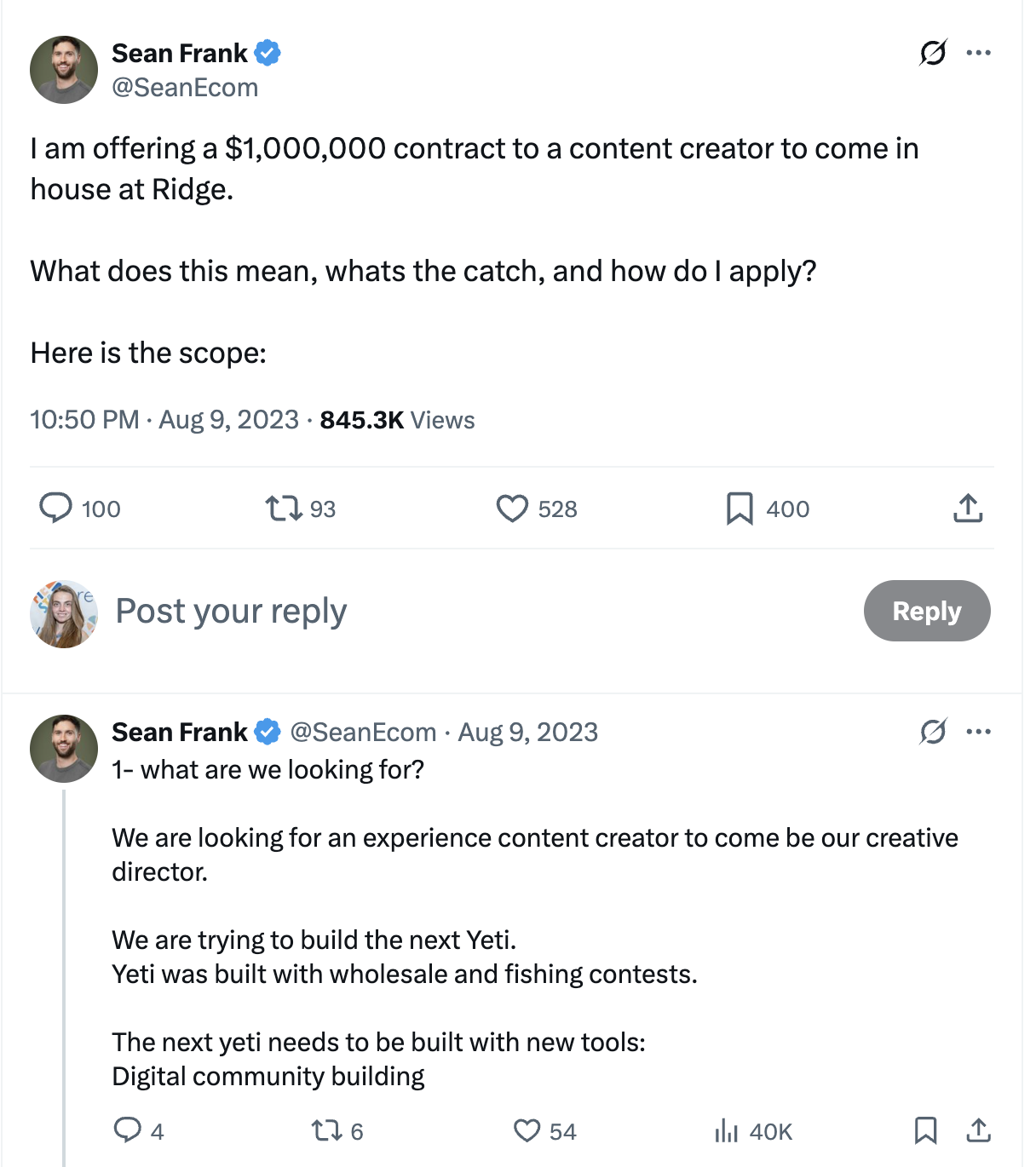
Once MKBHD came on, he received a mix of equity and cash compensation. He also helps design the products:

However, the downside of forming an equity-based partnership is that the creator could decline in relevance or become involved in a scandal.
For example, MKBHD's brand has declined since the partnership began, so this is a risk worth considering before entering a long-term partnership with a creator.
#6: Donate to The Influencer’s Cause
If a creator is promoting a cause, like raising money for a charity, consider offering to donate directly to the cause rather than paying the creator.
This is a great way to work with macro influencers who are constantly bombarded with offers from brands.
For example, Lectric eBikes partnered with Ryan Trahan during his “50 States in 50 Days” fundraiser for St. Jude Children’s Research Hospital. In the deal, Lectric donated $100,000 up front and an additional $10,000 for every day Trahan rode the bike.
Here’s a full video from Ahrefs breaking down the marketing campaign:
How to Take Your Influencer Marketing to The Next Level
Flat fee posting is still the most common influencer partnership structure, although you can always negotiate with influencers to find a different deal that works best for your brand.
If you need help discovering the best influencers for your brand and reaching out to them, consider using a tool like Favikon.
It's an all-in-one creator platform that allows you to filter creators by region, follower count, total engagement, engagement rate, and other key factors critical to discovering the right partner for your brand.
Try Favikon today for free to see if it's the right solution to take your influencer marketing to the next level.
Related Articles
See all the articlesResources











.png)
